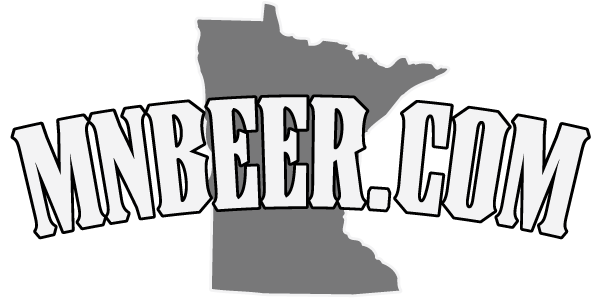I pulled this excellent description from Summit brewer Mike “the Miz” Miziorkoand of the new Summit Kölsch off of BeerAdvocate, and thought it worthy of re-posting here. It will also be included in the next Summit newsletter.
It is Summer time once again, and the inaugural brew in Summit’s Unchained series is about to be released. What better beer for hot summer weather than a Kölsch: light, balanced, crisp and refreshing with a slight fruitiness? Sounds good to me; that is why I was chosen to formulate the recipe for our version of this unique German ale style.
What does “Kölsch” mean?
Kölsch, like Kölner and Kölnisch refers to something from or in, or in the style of something from or in, the city of Cologne (Köln) in the North Rhine-Westphalia region of Germany. The word “Kölsch” is most frequently used to describe the style of beer native to the city as well as the local dialect. “Kölnisch” might be a familiar descriptor from 4711″Kölnisch Wasser”, the original Eau de Cologne. “Kölner”, the most widely used descriptor, would refer to everything from the people who live in Cologne (die Kölner) to the train station and the famous cathedral (Kölner Hauptbahnhof, Kölner Dom). So, Kölsch is simply “Beer from Cologne”.
So, how do you pronounce that?
Ö can often be expressed as OE if an umlaut is unavailable (Koelsch). As letters with umlauts are particularly difficult for English-speakers to pronounce correctly, think of the word Kölsch as being pronounced with vowel sounds more like Colonel and less like Welsh. Get it? It’s kind of an oerl sound with the r buried in the back of your tongue.Kölsch beer in general, Unchained “German Style” Kölsch in specific:
Although records of brewing in Cologne date back to the Middle Ages, Kölsch as we know it is a product of the 20th century. A Kölsch beer is an ale; a remnant of german brewing culture from the era preceding the discovery of bottom fermenting yeast and the advent of lager brewing. To be considered a Kölsch, a beer must be top fermenting, straw to gold in color, 11-12.5 ºP (1.044-1.050s.g.) in original gravity, approximately 4.8% abv, 20-30 IBUs and hop accented. Kölsch beers are typically less bitter than a Pilsener (though they are similar in body, color and strength) and marry the flavors of sweet-bready malt, spicy noble hops and fruity (almost white-wine like) top fermenting yeast. Kölsch beers are light, crisp and refreshing; they are meant to be consumed in quantity and are often prized for their digestive qualities. In short, Kölsch is the ultimate summer session beer for connoisseurs.Kölsch is actually an appellation of sorts, like “Champagne”, “Chianti” or “Rioja” and is protected as such by the EU under the articles of the Kölsch Konvention of 1986. The existence of the Kölsch Konvention is not altogether surprising, as Cologne has a long history of trade protectionism in brewing with a brewers’ guild dating back to the mid 11th century. Per the articles of the Konvention, technically and legally, any beer brewed in this style outside of Cologne and its immediate environs cannot be called a Kölsch. In relatively close proximity to Cologne, but outside the area protected by the Konvention, beers brewed in the same style with the same ingredients are referred to as “Pseudo-Kölsch” and can only get so close to the Kölsch moniker as to claim “top fermenting like Kölsch” or “brewed in the traditional Kölner style”. These claims must, of course, be subsequent tag lines to the actual names of the beers. Some brewers of “Pseudo-Kölsch” have gone to great lengths to suggest similarities to Kölsch in the naming of their beers; one example is a beer called “Schlök” an anagram of Kölsch, another is simply called “Oelsch” with no K or umlaut on the o.
Even here in the US, the long arm of the Kölsch Konvention is able to assert itself. Per TTB regulation, US Craft Brewers are not allowed to simply name a beer “Kölsch”, other descriptors must be included to obtain label approval, hence Unchained “German Style Kölsch”. You might be thinking to yourself “well, of course it’s German style… it’s a Kölsch!”, the reason we chose this descriptor was to indicate that we are brewing a beer which we believe to be the most faithful interpretation of the style possible. Unlike other Americanized versions of Kölsch beers, we have maintained a strict adherence to the Reinheitsgebot in the brewing of this beer and not added any adjuncts (honey, corn, fruit, etc.). Furthermore, we have used only the most authentic ingredients available to produce this beer. We have used 100% imported German malt; a blend of Pilsener and Kölsch malts from the Global Malt cooperative (a cooperative of 3 German Maltsters with a combined 6 maltings headquartered in Osthofen) and a small percentage of Caramalz from the Weyermann maltings in Bamberg. The hops we have used are also imported from Germany and are only grown in the Hallertau region of Bavaria. Hallertau Mittelfrüh are some of the most delicate, distinctive and highly prized hops in the world. Finally, we will be using traditional top-fermenting Kölsch yeast obtained from the world renowned yeast banks at Weihenstephan in Bavaria.
In conclusion, the best available, most authentic ingredients combined with traditional mashing and brewing procedures in our german brewhouse, a cool fermentation and a cold conditioning period yield the finest most true-to-style example of this unique beer that we could hope to produce, so please enjoy!
Zum Wohl!
Mike “the Miz” Miziorko
BrewerSummit Unchained German Style Kölsch stats:
OG: 11.5º P (1.046 s.g.)
Color: Golden
IBUs: 25
Abv: 4.7%

Comments are closed.